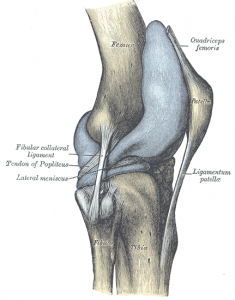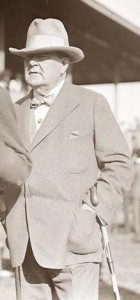
Today is St. Patrick’s Day, that great American bacchanal on a boisterous Irish theme, and here at Art Scatter World Headquarters we trust our stockholders are out on the streets whooping and hollering and downing tankards of green beer and generally celebrating the corning of the beef. Or not.
My own plans are slightly different. I figure instead on relaxing in my lush private retreat overlooking the grand garden estate I purchased with a small slice of this year’s Art Scatter upper-management bonus distribution — how else could we attract the best and the brightest talent in these tough times? — slowly savoring a fine Irish whiskey served by one of my several personal assistants as I contemplate the successful completion of a full year of the Artificial Me.
The funny thing is, I don’t feel in the least artificial, and I’m wondering if that makes me and Bernie Madoff blood brothers.
Yet here I sit, and stand, and walk, and even bend, things that had gradually become so difficult that a year ago today I found myself lying in an operating room at Providence Portland Medical Center, where a team led by the blessedly skillful orthopedic surgeon Dr. Steven Hoff scraped and jabbed and sliced into my left leg, stretching tissue wide enough to insert something very like a hockey puck into the degenerated space between my femur and tibia that had become the laughably inadequate remnant of a once solidly workable knee. (Strictly speaking this isn’t quite true. I didn’t “find myself” lying in the operating room; I never saw the place. By that point, swaddled in the sweet bassinet of modern pharmacology, I was deep into lullaby land, and thank goodness for that: This was no Civil War surgery, with hack saw and clenched teeth and a bottle of booze to stanch the pain.)
Today, after a few months of rehab under the gentle yet firm prodding of Providence’s physical therapy squadron, I’m happy to report the bailout was a success. For some time I’ve been back to “normal” — that is, under ordinary circumstances I don’t think about my knee any more than an AIG executive thinks about ethical responsibility. Sure, there’s a little tightness of the skin around the scar tissue, but that’s just the new normal: Think of it as one of those niggling oversight requirements that might go away if you just ignore it. Before surgery, stairs and even slight inclines on sidewalks were obstacles. Before surgery, I hesitated between walking-sticks and walking-canes, uncertain of which was more stylish/less obtrusive (and foolishly self-conscious in a way I hadn’t felt for years) but always with one or the other at hand. Now, sticks are long forgotten and stairs are just life.
In other words, everything’s natural — except for that highly artificial, nonorganic, composite hockey puck that separates bone from bone; that blessed chunk of shock absorber that takes the stiffness out of my ambulatory stride. I am artificially normalized — engineered into effectiveness. And while the whole process has hardly been on the order of a heart transplant — I join millions and millions of other people who’ve had knee or hip replacements — I have dipped my toes into the brave new world of Robot Man. I am, just slightly, less a biological being than when I began. And I feel good about it. I feel stimulated.
Continue reading Celebrating a year of the Artificial Me

